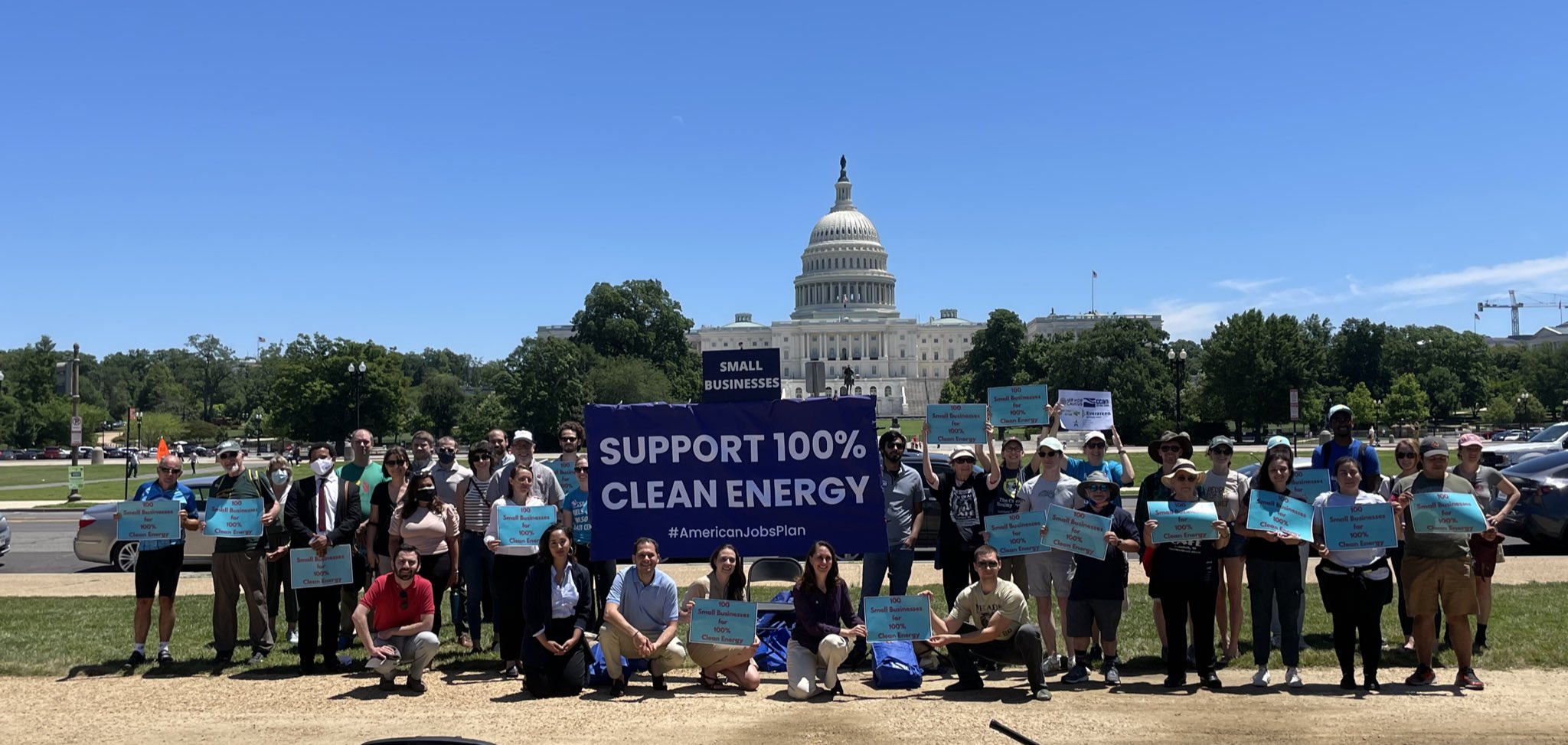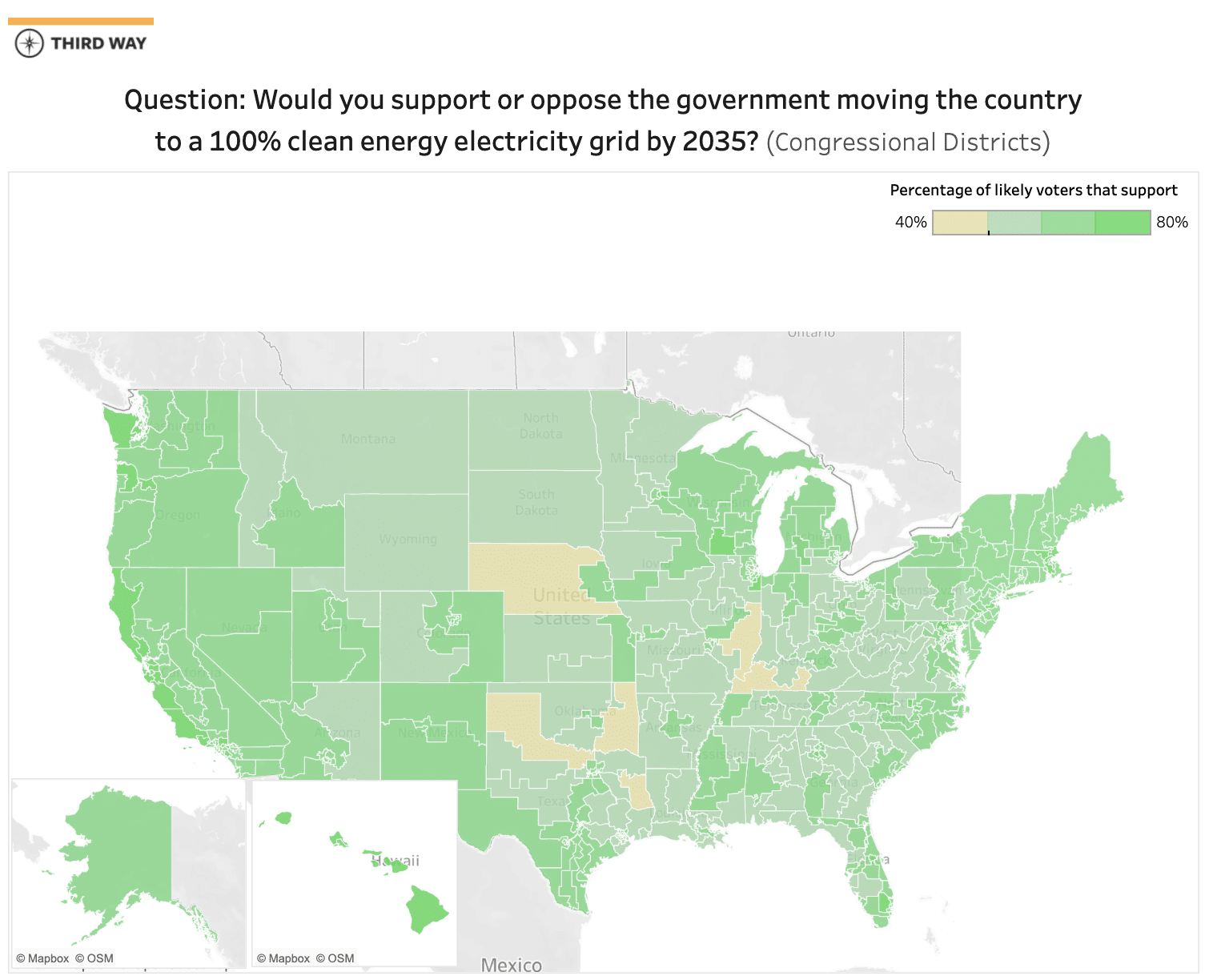As the dog days of summer roll on, Congress is slogging away on two massive legislative packages that many hope will contain the needed policies and programs to begin to address the climate crisis: an infrastructure bill and a budget package.
While the timeline and eventual outcome for a $1 trillion infrastructure bill are still unclear due in part to major disagreements over how to finance the proposal, it does seem pretty certain that many of the climate-friendly measures proposed earlier this year may not make it into a final package.
Congress begins debate on a budget reconciliation package
Meanwhile, Congress has also begun negotiations on a $3.5 trillion budget package that may eventually contain many of President Biden’s other key priorities such as:
- Expanding Medicare,
- Reinvesting in education,
- Raising taxes on the wealthy and corporations, and
- Prioritizing climate-friendly clean energy policies, including a goal to hit 100% clean electricity by 2035.

Like the American Rescue Plan passed earlier this year, this budget package (combining elements of Biden’s proposed American Jobs Plan and American Families Plan) is expected to pass using a process known as budget reconciliation where only 50 Senate votes are needed, with the Vice President will cast the tie-breaking vote, rather than the usual 60 votes needed to avoid a filibuster.
A CES: reducing climate pollution while bolstering economic growth
One of the most critical policies that could rapidly reduce climate pollution while bolstering economic growth – a Clean Electricity Standard (CES) – is expected to be included in the budget reconciliation package. Read a detailed explanation about a CES from Evergreen Action.
A Clean Electricity Standard will create millions of new jobs, eliminate poisonous air pollution, and reduce utility bills for ratepayers across the country.
In the current Congress, a CES is most likely to be implemented through an investment-based policy called a Clean Electricity Payment Program (CEPP), which would differ slightly from traditional clean or renewable power standards. Traditional standards or targets utilize clean energy credits to require utilities to hit deployment targets by a certain date, such as a requirement that 80% of U.S. electricity is derived from zero-carbon sources by 2030 and then 100% by 2035. The CEPP proposal offered by Minnesota’s Sen. Tina Smith would instead offer direct payments to utilities for hitting these clean energy deployment goals, paired with a fee if they fail to meet those targets. In essence, a CEPP like this would essentially be a “carrot and stick approach” to encourage utilities to rapidly deploy more clean electricity onto the grid or pay a penalty.
Regardless of how a standard is implemented, it would serve as the cornerstone for our broader clean energy transformation, setting us on a path to the drastic reductions in greenhouse gas emissions that science tells us are needed in order to avert the worst impacts of climate change. A new study clarifies the tremendous health benefits of implementing a clean energy standard by preventing hundreds of thousands of premature deaths and delivering well over a trillion dollars’ worth of health and climate benefits between now and 2050.
Clean Electricity Standards: Proven, Popular, and Possible
Clean or renewable electricity standards are already law in more than 30 states and territories. In previous Congresses, such a proposal might have received strong bipartisan support because it drives low-cost power sector decarbonization while stimulating local investment. But in the hyper-partisan realm of today even a common-sense proposal that would create millions of jobs, clean our air and water, protect public health, lower electric bills, and secure energy independence is uncertain.
The American public is also strongly supportive of transitioning to a clean power grid: recently polling from Third Way, in partnership with the University of California, Santa Barbara political scientist Matto Mildenberger and using underlying data from Data for Progress, shows that voters across the country support the federal government moving the country to 100% clean electricity.

Earlier this summer, the Southern Alliance for Clean Energy released a report showing that achieving 100% clean electricity was possible with several different pathways for the region’s largest utilities and SACE remains strongly supportive of a 100% Clean Electricity Standard or Clean Electricity Payment Program. And earlier this spring, we joined more than 100 other organizations around the country in calling for this policy.
If you’d like to join SACE in supporting this critical tool in reducing carbon emissions and strengthening our economy, take action and send a customizable letter urging your elected leaders to support a 100% Clean Electricity.

[button color=”blue” url=”http://bit.ly/cleanelectricityby2035″]Take Action: Send a Letter to Members of Congress [/button]

